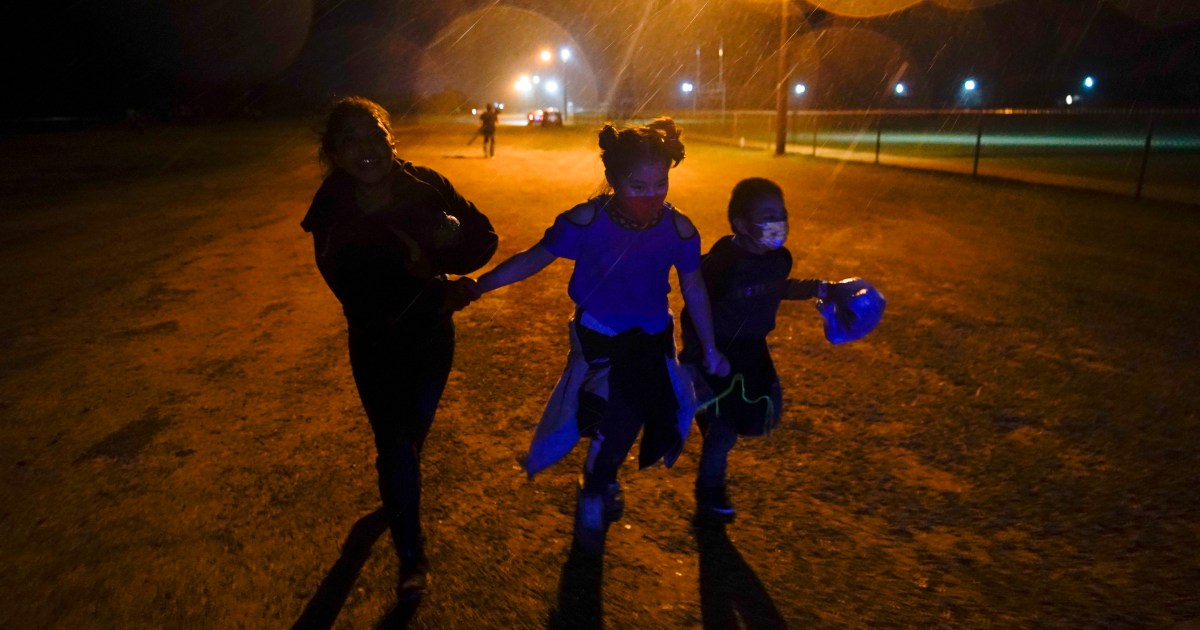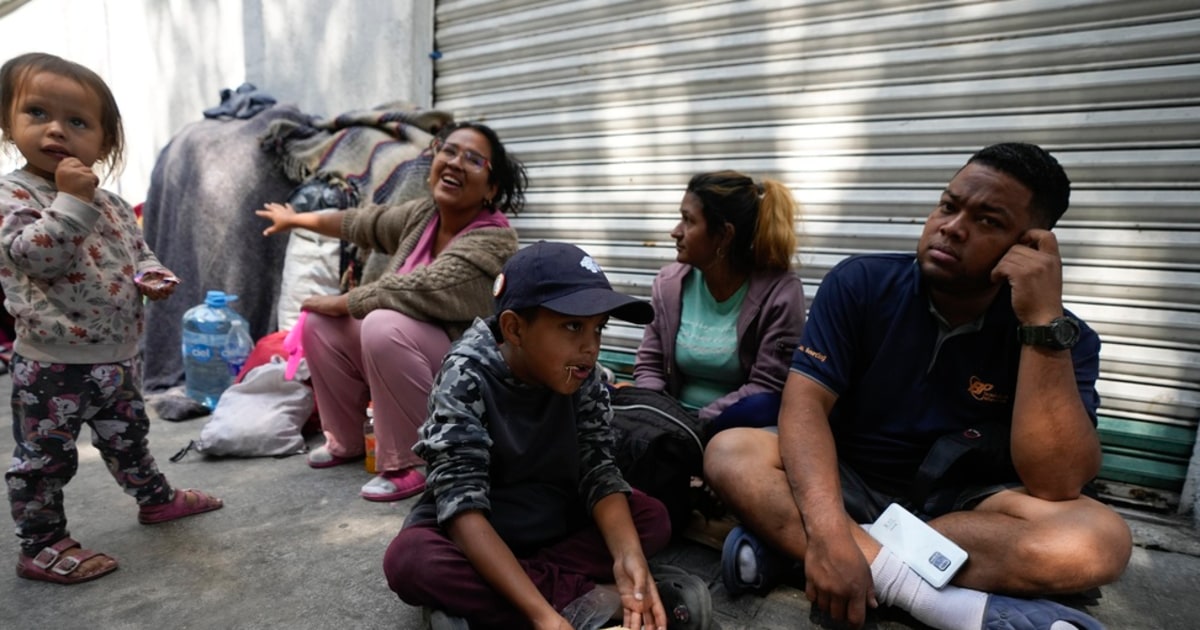171,700 migrants cross the southern US border in March 1:02
(CNN) -
Migrant families are "separating themselves" in Mexico, sending children alone to cross into the United States after being expelled, the main agent of the US Border Patrol in the sector told CNN. from the Rio Grande valley.
"What we are seeing, more and more, is that families are separating themselves in Mexico," Brian Hastings, who leads the most active sector of the Border Patrol in the United States, said in an interview Monday.
From February 24 to March 23, there were 435 incidents in the South Texas region where children were detained crossing the border alone after being previously expelled with their family as part of the pandemic health order known as the 'Title 42 ".
The report is based on intelligence the Border Patrol has on unaccompanied children in their custody, according to Hastings.
The Biden administration has had to deal with a growing number of immigrant arrivals who have overwhelmed resources and created overcrowded conditions.
The situation has also contributed to children spending prolonged periods in Border Patrol custody, beyond the legal limit of 72 hours.
Climate and covid: two major factors are worsening the migration crisis on the southern border of Mexico and in the United States
Migrant minors reunite with their mothers in the US 4:08
Cases of self-separation of families at the border
To underscore concern about the danger associated with the rise in unaccompanied minors, Hastings shared a video of a 10-year-old boy who he said was found alone in the field on the morning of April 1, after the group he was traveling with left him alone.
advertising
"Can you help me?" The boy asked a Border Patrol agent after a farmer saw the boy and alerted authorities.
Video provided to CNN by the agency shows what appears to be the Border Patrol initially finding the boy who they say is afraid.
He had traveled with about 80 other people, without parents, according to Hastings.
The boy had been left for about four hours, Hastings said, adding that "when he woke up, he didn't know where he was or where to go or what to do."
All of the 10-year-old's circumstances are unknown, including how and why he came to the United States.
It is also unknown whether it is a case of self-separation.
Unfortunately, such incidents are becoming "common," Hastings said, adding that children have been found on the riverbank with a phone number written on their clothing, while others have been driven off the rafts by smugglers.
In the Rio Grande Valley sector, there have been around 167,000 finds since the start of the fiscal year in October 2020, nearly 26,000 up from the same time period in 2019, during the previous border influx.
"We continue to see the numbers grow," he said.
More than 22,000 unaccompanied minors have been detained in the region this fiscal year.
The number of families entering the area is increasing "very rapidly," Hastings said, referring to the current demographics.
'Deep Overcrowding': Facilities Housing Immigrant Children at Border Go Over Limit, Designated Supervisors Say
Unintended consequences?
Amid the most recent influx at the border, the Biden administration has continued to rely on a Trump-era health law, known as Title 42, which allows federal officials to quickly eject migrants during the pandemic, rather than go through immigration or asylum processes in the US
But the administration has made an exception for children, who are transferred to the US Department of Health and Human Services (HHS) "The only people we are not going to let feel alone on the other side of the Rio Grande without help are the children, "said President Joe Biden during a recent news conference.
That effort to keep children from waiting in Mexico may have had an unintended consequence, as some families seem to have decided to make the heartbreaking decision to send their children across the border without them.
The drama of immigrant children in the US does not yield 1:01
The Border Patrol is encountering children who were previously detained with a family member and expelled under Title 42, and then re-entered the United States alone, Hastings said, "knowing they will be placed in HHS custody."
Hastings said the agency is trying to gather as much intelligence to determine current trends and traffic patterns, but said it is "very difficult when there are so many people" to interview all of the detainees, given the large volume of people.
Under the Trump administration, hundreds of children who had initially arrived at the southern border of the United States with their families later crossed alone after being subject to a policy that forced migrants to wait in Mexico until their hearing date in the United States. , often in dangerous conditions.
Last week, CNN reported that the U.S. Customs and Border Protection (CBP) found a record number of unaccompanied minors in March, according to preliminary data, highlighting the worrying upward trend. .
1 of 20
|
This aerial photo, taken on March 15, shows a temporary processing center established by US Customs and Border Protection in Donna, Texas.
Attorneys who recently spoke with children at the facility say they are terrified, crying and worried that they will not be able to call their parents.
Adrees Latif / Reuters
2 of 20
|
Yaretsi, a 4-year-old girl from Honduras, sits on the lap of her mother, Angie, as she gazes out the window of a U.S. Border Patrol vehicle on March 15.
They had just crossed the Rio Grande on a raft.
Adrees Latif / Reuters
3 of 20
|
Migrant mothers from Central America hold their children while waiting for transportation After crossing from Mexico to La Joya, Texas, on March 14 Adrees Latif / Reuters
4 of 20
|
Migrant families and unaccompanied minors from Central America take refuge in a makeshift processing center under the Anzalduas International Bridge in Granjeno, Texas, on March 12.
Adrees Latif / Reuters
5 of 20
|
Central American migrants await transportation in Penitas, Texas, on March 12.
Adrees Latif / Reuters
6 of 20
|
Unaccompanied minors are transported in a US Border Patrol vehicle after crossing the Rio Grande into the United States.
Authorities say the number of unaccompanied minors in the agency's custody has reached a record high.
Adrees Latif / Reuters
7 of 20
|
Traffickers use a raft to transport migrant families and children across the Rio Grande to Texas on March 6.
Adrees Latif / Reuters
8 of 20
|
Migrant families and children sit in the back of a police truck after crossing the Rio Grande on March 5.
Adrees Latif / Reuters
9 of 20
|
Migrants climb the banks of the Rio Grande toward the United States as traffickers on rafts prepare to return to Mexico on March 5.
Adrees Latif / Reuters
10 of 20
|
María, a 4-year-old girl from El Salvador, is held by her mother, Loudi, after they crossed the Rio Grande on March 5.
Adrees Latif / Reuters
11 of 20
|
A boy watches from a tent in Tijuana, Mexico, on February 27.
He is camped out with other migrants from Central America waiting to cross the border and request asylum in the United States.
Jorge Duenes / Reuters
12 of 20
|
Migrants from the Matamoros camp in Mexico arrive to cross the border bridge into the United States on February 26.
The camp was recently emptied after the Biden administration ended the Trump administration's migrant protection protocols, which forced many to wait in Mexico while their immigration cases made their way through US courts. César Rodríguez / Bloomberg / Getty Images
13 of 20
|
A U.S. Border Patrol agent takes a young asylum seeker and his family to a bus station in Brownsville, Texas, on February 26.
US immigration authorities are now releasing many asylum-seeking families after detaining them while crossing the US-Mexico border.
Immigrant families are free to travel throughout the US while they await asylum hearings.
John Moore / Getty Images
14 of 20
|
A U.S. Customs and Border Protection agent checks the name of a migrant, as a group of at least 25 asylum seekers from a migrant camp in Mexico were allowed to travel to the United States on February 25.
The group was the first to be allowed to cross into South Texas as part of the Trump administration's repeal of migrant protection protocols.
Many of the asylum seekers had been waiting in a camp along the Rio Grande for more than a year.
John Moore / Getty Images
15 of 20
|
Emma Moreno (right), a volunteer working at the Agape shelter in Tijuana, helps an asylum seeker verify the "Conecta" website of the United Nations High Commissioner for Refugees.
"Conecta" allows asylum seekers who have been trapped in Mexico under the Migrant Protection Protocols to enter the United States and await their asylum process there.
On the first day of launch, the website quickly became oversaturated when the estimated 25,000 people on the show tried to sign up.
Guillermo Arias / AFP / Getty Images
16 of 20
|
A migrant girl from Brazil seeking asylum in the United States sits on a bench inside a shelter in Ciudad Juárez, Mexico, on February 19.
José Luis González / Reuters
17 of 20
|
Asylum seekers wait outside the El Chaparral border port as they wait to cross into the United States from Tijuana on February 19.
The Biden administration is still turning away most migrants at the border, but officials are gradually allowing 25,000 people previously enrolled in the Migrant Protection Protocols program to enter Patrick T. Fallon / AFP / Getty Images
18 of 20
|
Migrants seeking asylum in the United States carry empty water jugs at a camp in Matamoros, Mexico, on February 18.Daniel Becerril / Reuters
19 of 20
|
Migrants cross the Rio Grande River to reach El Paso, Texas, from Ciudad Juárez, Mexico, on February 5.
Henrika Martínez / AFP / Getty Images
20 of 20
|
Teddy bears belonging to migrant girls are seen in the Rio Grande on February 5 after the girls applied for asylum in El Paso.
José Luis González / Reuters
New facilities to house immigrant minors
The Biden administration has been quick to establish emergency sites to house migrant children, many of whom have been in overcrowded conditions.
CBP is operating two large temporary tents to help manage the influx of immigrants crossing the U.S.-Mexico border, including one in Donna, Texas, located in the Hastings area of responsibility.
HHS recently announced a series of new facilities, relying on convention centers, military sites and influx shelters, to accommodate minors.
Despite the new facilities, the administration has struggled to quickly remove children from border facilities and into more appropriate HHS care.
"We have been working very hard with our partners at HHS to try and keep up with such a high level of activity," Hastings said.
"But they need to step up and they are working hard to get there."
More than 350 children are detained on average per day in the region, Hastings said.
"It's not keeping up," Hastings said of the number of HHS facilities opening compared to the large number of children arriving.
The 10-year-old boy, found Friday, is fine, Hastings said, and was in CBP custody as of Monday.
The agency was working with HHS to get him into their care "as quickly as possible."
In late March, following calls for greater transparency, the government allowed some members of the media to tour a temporary CBP facility in Donna, Texas, a part of the industry that Hastings oversees.
Inside, cameras captured children lying next to each other in plastic-lined pods, shelves full of supplies, and dozens of people waiting to be processed by immigration authorities.
The facility remains well above capacity, with around 4,200 immigrants, most of them children, in the facility - on Monday morning - despite a pandemic capacity of 250. It was built to house just 1,500 people, regardless of pandemic guidelines.
Authorities in Mexico find a 4-year-old boy allegedly traveling alone to the US border.
Some families are allowed to stay
Many families have also been allowed to remain in the United States, as the state of Tamaulipas in Mexico, which is located south of the Rio Grande Valley, will not accept the expulsion of certain family members from the United States. of families, along with the large number of children, is depleting resources and capacity, Hastings said.
To ease pressure on staff and facilities in the region, some migrant families are transported by bus or plane to other regions of Texas, primarily Laredo and El Paso.
In other cases, the agency will release families without a "notice to appear," saving hours on paperwork to speed up processing and get people out of government custody faster.
The situation has been "overwhelming for officers," Hastings said, particularly from the Donna facility, where 500 people are crammed into plastic capsules, which are intended to house about 38 people.
"It is very difficult, very hard for people who are husbands, parents, grandparents, grandmothers to see this many children in our custody," he said, echoing something the administration has repeatedly said: "The Border Patrol facility does not It is the place for anyone, especially children or long term families.
- CNN's Priscilla Álvarez contributed to this report.
Undocumented Children Border Patrol

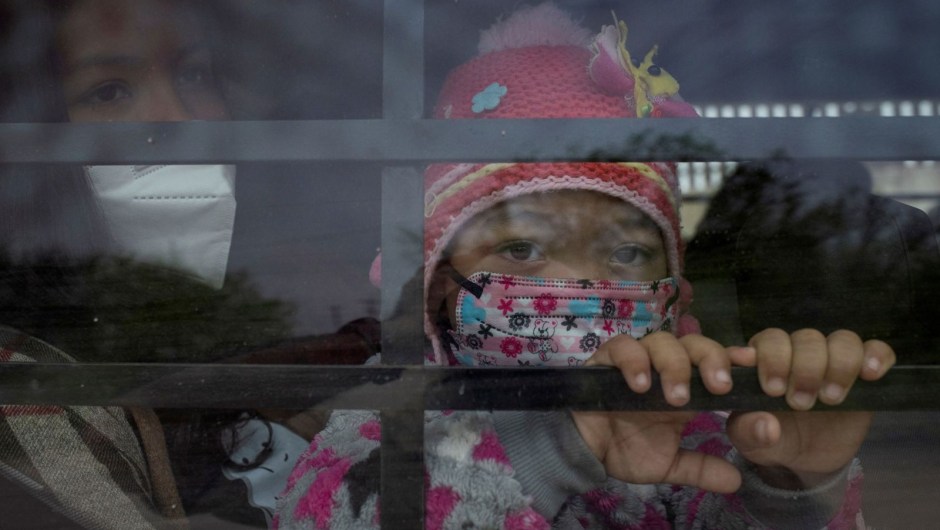
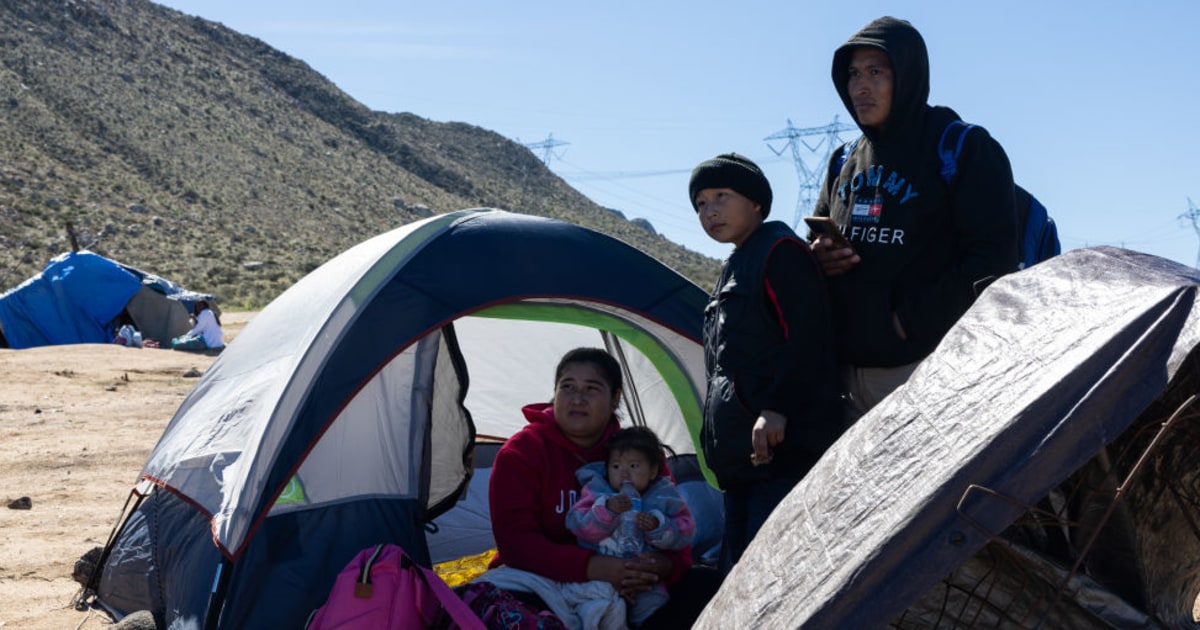
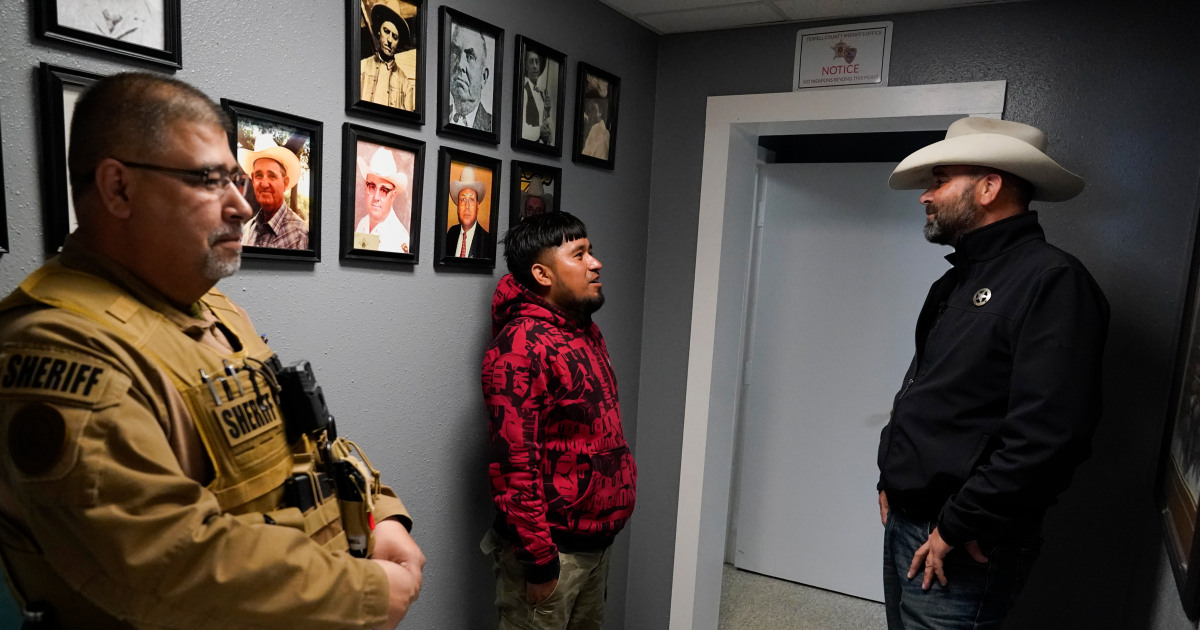
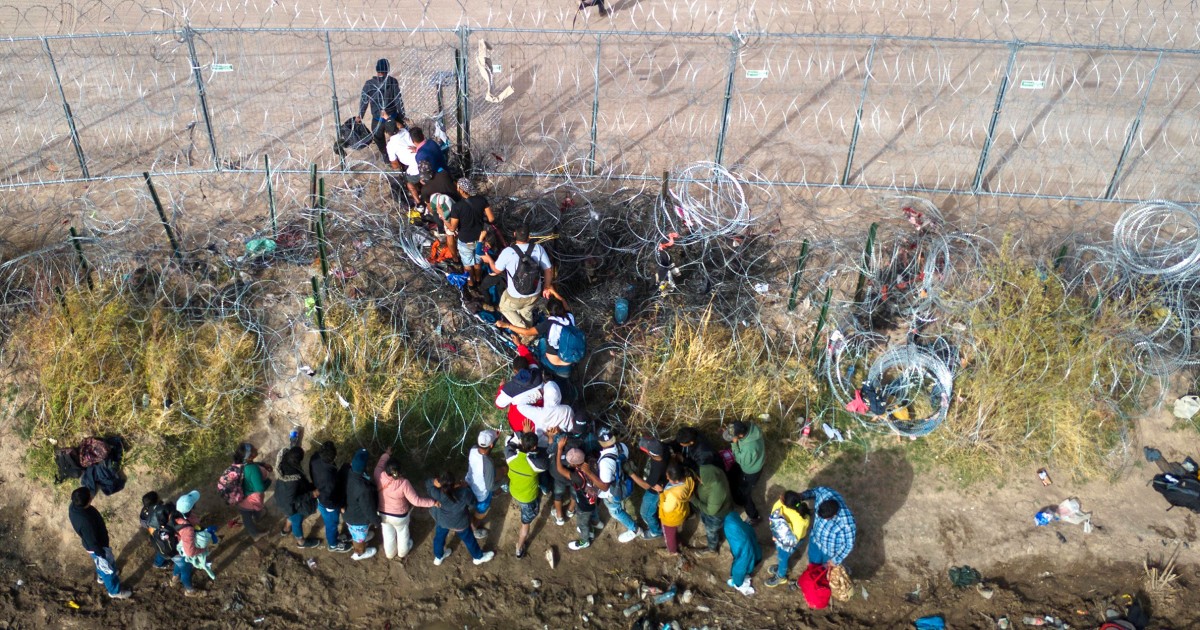
/cloudfront-eu-central-1.images.arcpublishing.com/prisa/YLOEMFF4HJC23HMOYLNKJIYY3A.jpg)
